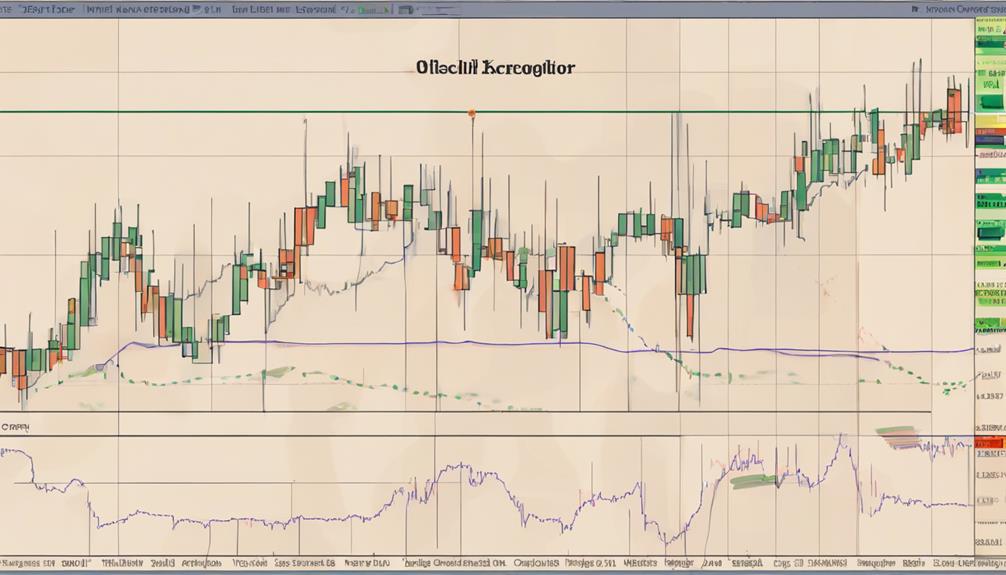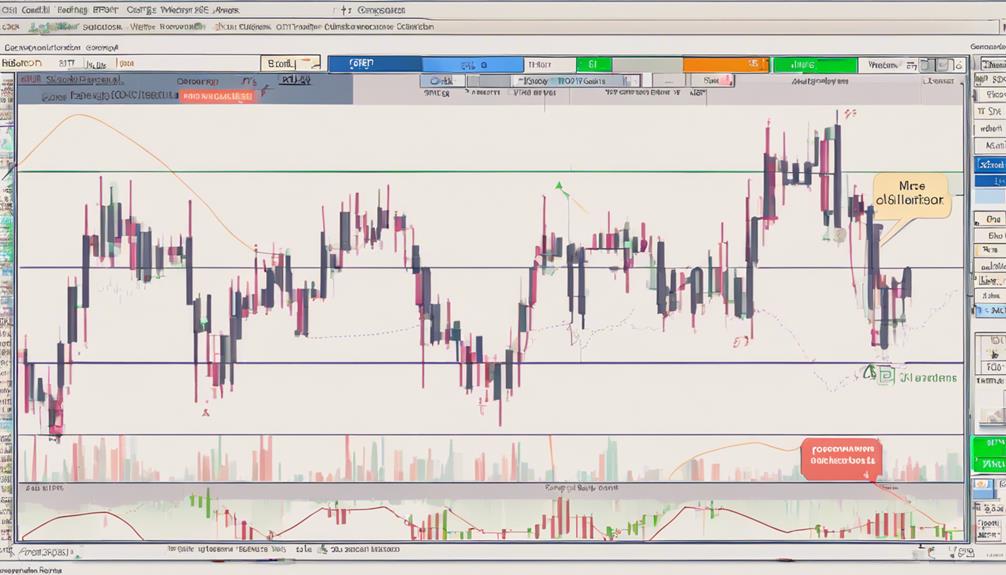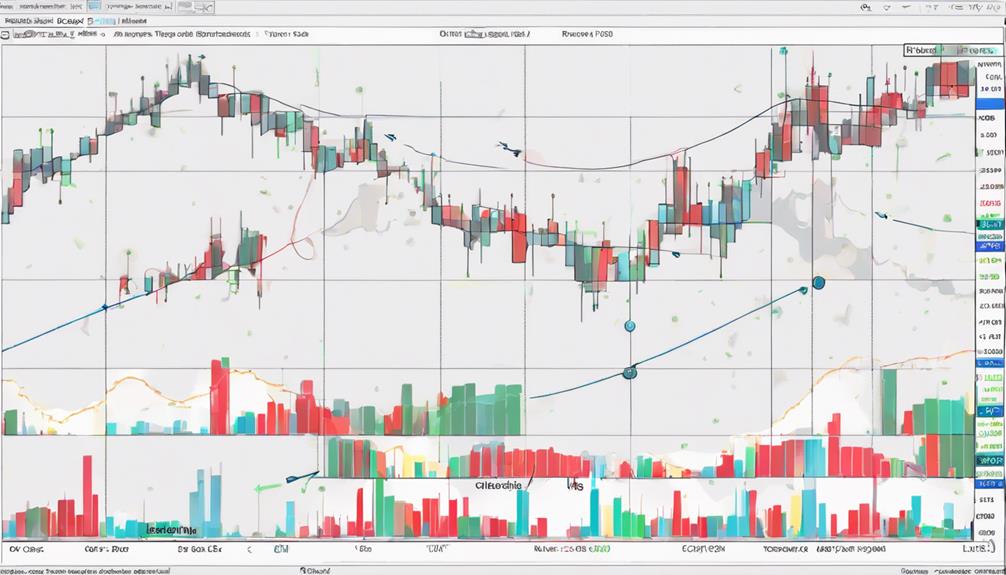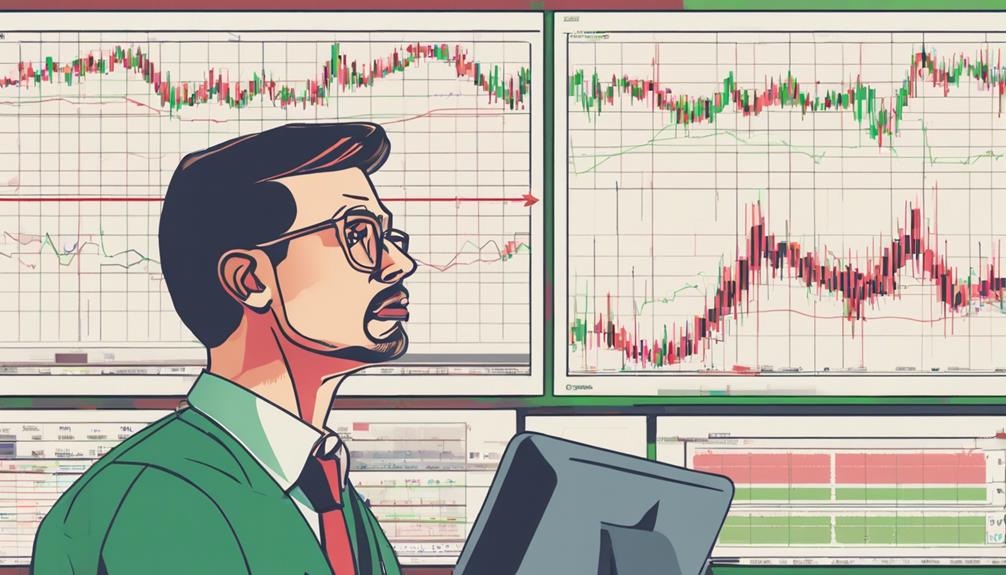Navigating overbought and oversold oscillators is akin to maneuvering through a dense forest; it requires precision and skill to avoid pitfalls.
As you delve into the world of oscillators, remember that mastering these indicators can lead to profitable outcomes.
Stay tuned to discover how you can enhance your trading strategies and make informed decisions in volatile markets, where overbought and oversold conditions can serve as valuable entry points.
Understanding Stochastic Oscillator Basics
The Stochastic Oscillator, a key tool for traders, measures price momentum by comparing the closing price to the price range over a specific period. It helps identify potential overbought conditions when the indicator surpasses 80, signaling possible selling opportunities. Conversely, when the oscillator drops below 20, it suggests potential oversold conditions, indicating buying opportunities.
Introduced by Dr. George Lane in the late 1950s, this indicator analyzes market trends through its %K and %D lines. %K reflects the current price's relationship to the range, while %D represents a moving average of %K. Understanding these basics is crucial for traders to interpret market dynamics efficiently and make informed trading decisions based on price movements and momentum.
Identifying Overbought and Oversold Levels

Navigating the world of trading requires a keen eye for identifying overbought and oversold levels, crucial indicators that signal potential market reversals.
Overbought conditions are often pinpointed when the Relative Strength Index (RSI) climbs above 70 or the Stochastic Oscillator surpasses 80. Conversely, oversold situations are typically recognized when the RSI dips below 30 or the Stochastic Oscillator drops under 20. These technical levels denote extreme price circumstances that could precede market shifts.
Traders frequently utilize overbought and oversold signals to guide their buying or selling decisions. By monitoring these levels, traders can anticipate shifts in market momentum and adapt their trading strategies accordingly to capitalize on potential opportunities in the market.
Using Divergence Signals Effectively

Utilizing divergence signals effectively involves keen observation and strategic application in technical analysis for informed trading decisions. When using these signals, traders can anticipate potential trend reversals and market shifts.
Here are crucial points to consider:
- Bearish divergence warns of a possible downward price movement.
- Bullish divergence suggests a potential upward price movement.
- Traders combine divergence signals with other technical analysis tools to confirm trends.
- Recognizing these patterns promptly can help traders adjust their strategies according to market conditions.
Implementing the Stochastic Oscillator Strategy

When implementing the Stochastic Oscillator Strategy, focus on identifying key market conditions to anticipate potential price reversals effectively. The Stochastic Oscillator helps traders identify overbought and oversold conditions in the stock market by analyzing the relationship between the current closing price and the price range over a specified period.
Traders look for signals when the indicator crosses specific thresholds, such as 80 for overbought and 20 for oversold conditions. By understanding and applying this strategy, traders can make more informed trading decisions based on market momentum.
Paying attention to these signals and thresholds can provide valuable insights into potential reversals, aiding traders in navigating fluctuations in stock prices successfully.
Avoiding Common Mistakes in Interpretation

To interpret overbought and oversold conditions accurately, it's crucial to avoid common mistakes that can impact trading decisions. Here are some key points to consider:
- Misinterpreting overbought conditions can lead to premature selling decisions, potentially missing out on profits.
- Oversold conditions may not always immediately bounce back, requiring patience and confirmation from other indicators.
Understanding the context of market trends and news events is vital to prevent overreacting to overbought or oversold signals.
- Relying solely on overbought/oversold indicators without considering fundamental analysis can result in missed opportunities or false signals.
How Can I Successfully Use Stochastic Oscillators in Navigating Overbought and Oversold Markets?
Stochastic oscillator crypto trading practices can effectively guide investors in navigating overbought and oversold markets. By utilizing this technical indicator, traders can assess market conditions and potential price reversals. Analyzing the oscillator’s readings can help identify when a cryptocurrency is overbought or oversold, enabling traders to make informed decisions on entering or exiting positions. Incorporating stochastic oscillator crypto trading practices can contribute to a more successful trading approach and increased profitability.
Frequently Asked Questions
What Is the Best Indicator for Overbought and Oversold?
For identifying overbought and oversold conditions, the Relative Strength Index (RSI) above 70 indicates overbought, and below 30 indicates oversold. The Stochastic Oscillator signals overbought above 80 and oversold below 20. Both are commonly used indicators.
How Do You Trade Overbought and Oversold?
When trading overbought, you can sell assets when the oscillator exceeds 80. For oversold, consider buying when it drops below 20. Use RSI or Stochastic for signals. Overbought signals caution or selling; oversold signals potential buying opportunities.
What Indicates Overbought and Oversold Conditions in a Security?
When a security's oscillator, like RSI or Stochastic, surpasses 70 or falls below 30, it denotes overbought or oversold conditions, signaling potential reversals. Traders use these levels to guide selling or buying decisions based on market dynamics.
What Is the Signal for Overbought Oversold?
You think overbought signals mean "buy high, sell higher" and oversold signals scream "buy low, sell high." Rethink! Overbought warns of potential pullback, oversold hints at a bounce. Master these signals for tactical trading.
Conclusion
In conclusion, mastering the art of navigating overbought and oversold oscillators requires a keen eye for market conditions. By understanding the basics, identifying key levels, utilizing divergence signals, implementing effective strategies, and avoiding common mistakes, you can successfully navigate through these territories.
Remember, in the world of trading, it's important to 'strike while the iron is hot' and capitalize on opportunities when they arise. Stay informed, stay proactive, and stay ahead of the game.
Happy trading!


